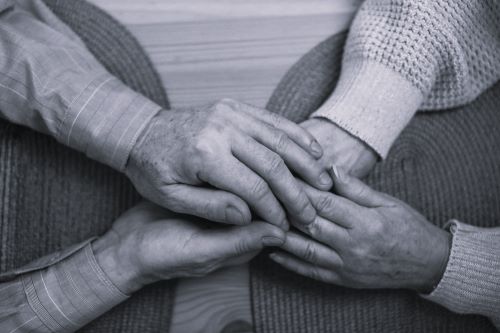
By Sam van Kalkeren, MSN, RN, CMC, CDP, CADDCT – Aging Life Care Association®
Breaking the Stigma: Embracing Mental Health Treatment in Older Adults
Mental health is just as important as physical health for older adults. Let’s break the stigma and prioritize mental well-being. #MentalHealthAwarenessMonth
Many people with mental illness report that the stigma surrounding mental illness is more challenging to deal with than the mental illness itself. Stigma can make reaching out for help difficult, leaving someone feeling judged, alone, or as though no one could understand what they are going through.
Stigma is basically a brand of shame put on a person or group of people. It’s based on negative attitudes and beliefs that aren’t always true. According to the National Library of Medicine, is “characterized by negative stereotypes, prejudice, and discrimination, is a significant impediment in psychiatric care, deterring the timely provision of this care and hindering optimal health outcomes.” Stigma creates perceptions that cause the public to “fear, avoid, and discriminate against people with mental illnesses,” according to a report by the President’s New Freedom Commission on Mental Health.
There is stigma associated with mental illness. This ethics-laden issue is a barrier to individuals seeking or engaging in treatment services.
Mental health stigma can either be public stigma, self-stigma, or a combination of the two. Often, public stigma can create self-stigma (if it doesn’t already exist).

Breaking the Stigma: Embracing Mental Health Treatment in Older Adults
Examples of Mental Illness Stigma
People in the media and even in our communities will refer to someone with a mental illness as “dangerous,” “crazy,” or “incompetent” rather than unwell. There is often an idea that if you ask for help, you are “weak.” These examples cause more people to suffer in silence than realize it is braver to seek help and not struggle alone. There is also significant stigma in the language we use to describe behaviors that we assume are associated with a diagnosis.
Inaccurate stereotypes, labels, and descriptions all contribute to someone’s ability to ask for help. Someone labeled as a “procrastinator” may be struggling with anxiety. Telling them to “try harder” and “get over it” may not motivate them because it’s inaccurate to what’s going on for them. When someone refuses to eat, saying “they should just eat” can cause more harm. Saying someone “committed suicide” is yet another form of hurtful language implying the person “committed” an action, which is often seen as a crime instead of a mental illness. We need to be more aware of the way we add to the stigma against people with mental illnesses.
Stigma creates a barrier to mental health services, which, as a result, can create isolation and avoidance.
The Harmful Effects of Stigma
Some harmful effects of stigma include:
- Feelings of shame, hopelessness, and isolation
- Reluctance to ask for help or to get treatment
- Lack of understanding by family, friends, or others
- Fewer opportunities for employment or social interaction
- Bullying, physical violence, or harassment
- Self-doubt – the belief that you will never overcome your illness or be able to achieve what you want in life.
The most significant consequence of stigma is that people don’t get the treatment they need. Hence, fewer than half of those with a mental health condition get treatment, according to Mental Health America. People are afraid to disclose that they have mental health problems. They fear they will be treated differently.
Reducing Stigma
To reduce stigma, we all must commit to action—and many are very simple. Awareness of our language is one of the most significant changes we can all make, causing us to confront myths and stereotypes and become more open to the challenges someone may face. Becoming educated on different mental health topics allows us to become more aware of our language. Attending seminars and reading the research (including what you’re doing right now) are ways we can be actively engaged in reducing stigma. Understanding also creates empathy, so don’t be afraid to talk about it!
Mental Health Stereotypes
Next, confront negative stereotypes when they come up in conversations. Educate people against negative, inaccurate language to describe someone who might be struggling. Lean into helping them understand how saying they experienced a “panic attack” when maybe it was elevated stress could create harm for someone who struggles with panic. Remember, people are not their illness, so be mindful of describing people with mental illness as someone who “lives with” or “has…” vs. that “they are…”. Share your education with family, friends, and people in your circles. An important reminder when sharing your information or offering someone feedback is to remember they were probably uninformed, so be sensitive in your delivery. This can make all the difference to them leaning in versus rejecting what you share.

Learn About Mental Illness Symptoms
While learning more about mental illnesses, learn how to become a faithful ally —whether within your community, online, or different activist groups. Interacting with people who have mental illness and becoming an ally can also help you better understand some of the struggles they face regularly. Understanding people for who they are rather than their illness is also essential.
If you have ever struggled with stigma or mental health, it’s also vital for you to get the help you need. Reach out to people you trust who can help you find the best services. Don’t be afraid to lead by example by sharing about asking and receiving help when and if you need it. This story could save someone else’s life. Owning your experience helps not only you as well as others. Speaking up can help dispel myths and even empower others to know it is ok for them to get help. Together, we can all help people understand that mental illness is not shameful and can often be helped.
Together, we can all learn how to better offer support and acceptance to family, friends, neighbors, and community members who have mental health challenges. As a result of all of us leaning in to do our part in breaking the stigma, more people will be able to get the actual help they need and, as a result, live more fulfilling, healthier lives.
Mental Health Resources and Support:
Help is available.
Take the initiative to educate yourself about common mental health disorders in older adults, signs and symptoms to watch out for, and appropriate ways to offer support and assistance. Here are some resources you can explore to learn more about aging and mental health.
- National Coalition on Mental Health and Aging
- Resources from the E4 Center of Excellence for Behavioral Health Disparities in Aging
- Resources for older adults from the Substance Abuse and Mental Health Services Administration
- Mental health and aging information from the Center for Disease Control and Prevention
- World Health Organization facts on the mental health of older adults
- Resources from the National Institute of Mental Health on older adults and mental health
- Suicide in Older Adults — and Help for Them
For additional assistance for yourself or a loved one dealing with mental health issues, consider hiring an Aging Life Care Manager to help you navigate care.
This article originally appeared on OConnorPG.com April 2024. It has been edited with permission/approval of the original author for aginglifecare.org.
About the Author:
Sam van Kalkeren, MSN, RN, CMC, CDP, CADDCT is the Director of Aging Services at O’Connor Professional Group. He has been working as a psychiatric RN since 2012 and is a member of the Aging Life Care Association. He is a Care Manager Certified, Certified Alzheimer’s Disease, Dementia Care Trainer, and a Certified Dementia Practitioner through the National Council of Certified Dementia Practitioners. Sam has worked with all age populations, from pediatrics to geriatrics, suffering from mental illness. He has experience working with clients suffering from substance use and co-occurring disorders, complex mental health diagnoses, neurocognitive disorders, and personality disorders. Sam received his Master of Science in Nursing degree, specializing in Leadership and Management, from Aspen University. He invites you to connect with him by visiting the O’Conner Professional Group blog or following Sam on LinkedIn.